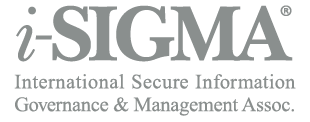Depth of NAID structure often overlooked
March 14, 2013
Many NAID members are unaware of the depth and complexity of the association’s operating structure. That’s unfortunate because it is a big deal and speaks to the seriousness with which association staff takes their roles.
Take NAID Certification, for instance. There are two chartered bodies in NAID that are responsible for overseeing the program’s integrity. There’s the Certification Rules Committee, which is responsible for developing the program’s security and operating specifications. There is also a separate body, the Certification Review Board, that is responsible for enforcement of the program. Both are comprised of representatives from member companies as well as paid, outside advisers. Both meet once or twice a month. Those serving on these committees are subject to board approval and term limits, and are required to sign confidentiality agreements.
If an issue arises that requires due process related to the enforcement of the association’s code of ethics or the protection of NAID trademarks, it is goes to the Complaint Resolution Council. Again, all members of this body must be approved by the board and are subject to term limits. They are also bound to the association’s confidentiality agreement. These industry professionals meet once or twice a month, depending on the workload, and have to process anywhere from two to five ethics complaints in each meeting. While every association has a code of ethics, few actively pursue enforcement with the diligence of NAID.
NAID’s accreditation program for Certified Secure Destruction Specialists (CSDS) is overseen by the CSDS Board of Regents. And, yes, these members are also approved by the NAID Board of Directors, subject to term limits, and bound to a confidentiality agreement. And, while it is a relatively new body within the NAID structure, they maintain an aggressive meeting schedule as they continue to develop the program’s foundation.
The point is that there is a lot of substance and structure in the programs NAID develops. Without exception, industry peers are in control. Even though all recommendations must be approved by the NAID board, the expertise and focus of these councils and committees is both remarkable and necessary.
To fully appreciate the extent of the NAID management structure, I encourage all readers to take a look at the Leadership Page on the association’s website. Knowing the depth and seriousness with which these issues are handled should be a source of great pride and considerable comfort to all members.
